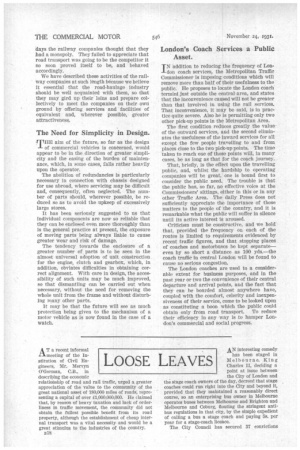The Need for Simplicity in Design.
Page 36

If you've noticed an error in this article please click here to report it so we can fix it.
TFHE aim of the future, so far as the design of commercial vehicles is concerned, would appear to be in the direction of greater simplicity and the easing of the burden of maintenance, which, in some cases, falls rather heavily upon the operator.
The abolition a redundancies is particularly necessary in connection with chassis designed for use abroad, where servicing may be difficult and, consequently, often neglected. The number of parts should, wherever possible, be reduced so as to avoid the upkeep of excessively large stores.
It has been seriously suggested to us that Individual components are now so reliable that they can be enclosed even more thoroughly than is the general practice at present, the exposure of moving parts being always liable to cause greater wear and risk of damage.
The tendency towards the enclosure of a greater number of parts is to be seen in the almost universal adoption of unit construction for the engine, clutch and gearbox, which, in addition, obviates difficulties in obtaining correct alignment. With care in design, the accessibility of such units may be much improved, so that dismantling can be carried out when necessary, without the need for removing the whole unit from the frame and without disturbing many other parts.
It may be that the future will see as much protection being given to the mechanism of a motor vehicle as is now found in the case of a watch.




































































































